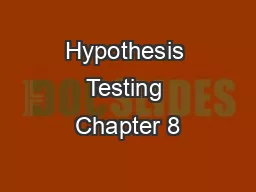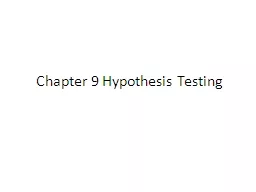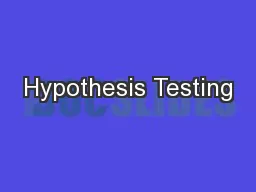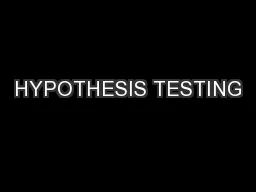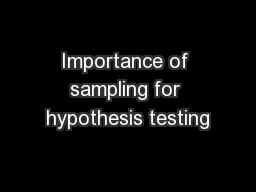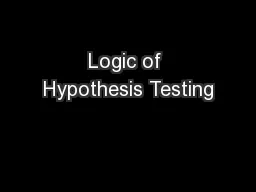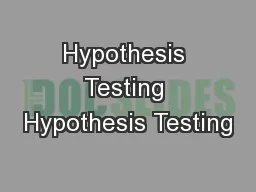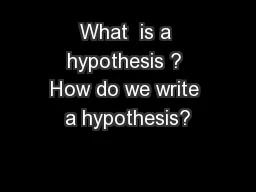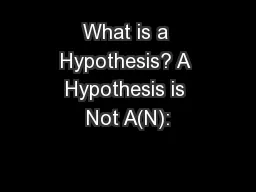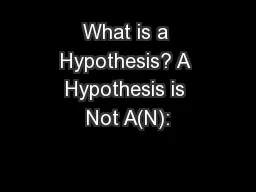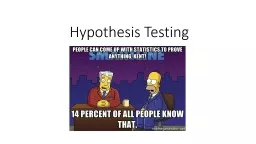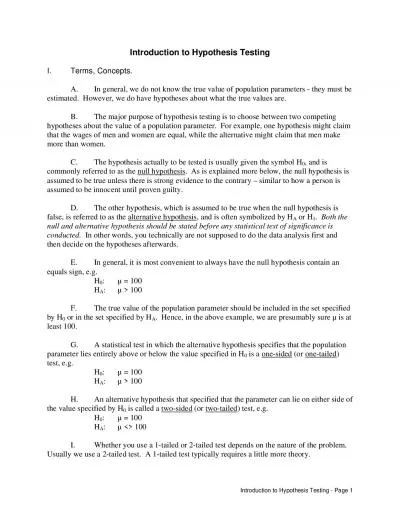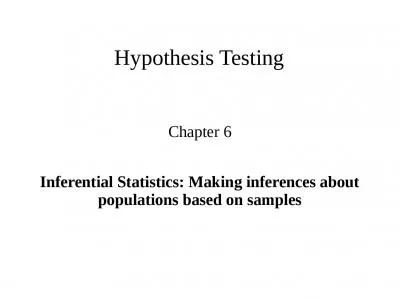PPT-Hypothesis Testing Chapter 8
Author : conchita-marotz | Published Date : 2018-10-25
Introduction Researchers interesting in many types of questions Earth warming Medication effect on blood pressure Seat belts and accidents Are differences in means
Presentation Embed Code
Download Presentation
Download Presentation The PPT/PDF document "Hypothesis Testing Chapter 8" is the property of its rightful owner. Permission is granted to download and print the materials on this website for personal, non-commercial use only, and to display it on your personal computer provided you do not modify the materials and that you retain all copyright notices contained in the materials. By downloading content from our website, you accept the terms of this agreement.
Hypothesis Testing Chapter 8: Transcript
Download Rules Of Document
"Hypothesis Testing Chapter 8"The content belongs to its owner. You may download and print it for personal use, without modification, and keep all copyright notices. By downloading, you agree to these terms.
Related Documents

